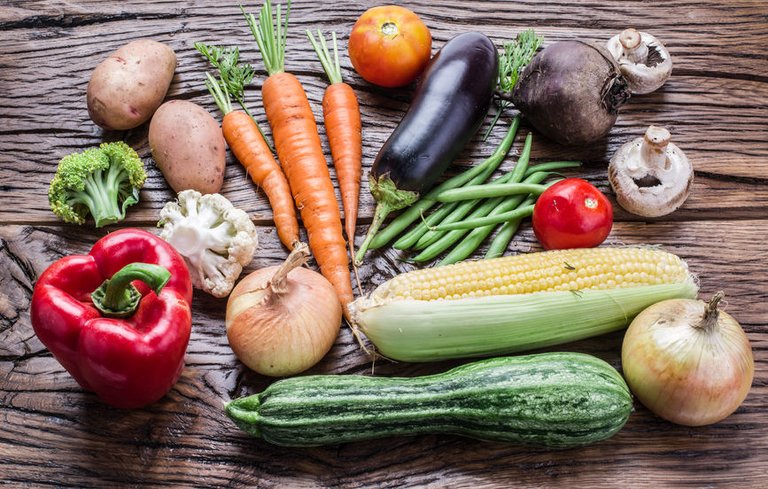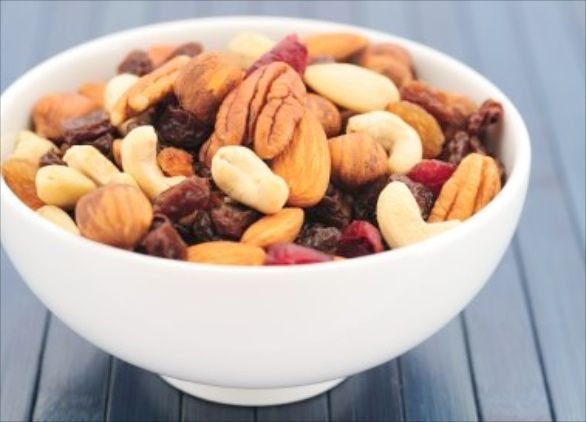Make these simple lifestyle adjustments to feel good all day long.
Whether you have diabetes or pre-diabetes or just bad blood sugar effects, you want to know what really works to control your blood sugar levels. It can make all the difference in life well and keep you out of the roller coaster of blood sugar, which can pull out your mood and energy and distort your hunger levels. Here are a dozen tips that will help your blood sugar and overall health. (If you have diabetes, remember that you always have to work with your health team first.)

- go outside
Of course being skinny is not a license to stay on your butt. According to a study conducted by the University of Florida in 2017, even those of adults with a healthy weight have higher blood sugar than those who are more active. This can lead to a risk of prediabetes even if you have a normal BMI. Take the stairs, go to the grocery store (if possible), keep this promise to your dog for a walk, and bike the weekend. Aim for 150 minutes of moderate intensity training each week.

- Eat more barley
In your attempt to eat more quinoa, you may have forgotten an old but-goodie carb: barley. This whole grain is filled with fiber that can dampen your appetite and help lower blood sugar, according to a Swedish study published in the journal Cell Metabolism. Why? Your intestinal bacteria interact with barley, which can help your body metabolize glucose (sugar). In addition, 1 cup contains 6 grams of fiber, which weakens the blood sugar spikes. Do not be afraid to throw it in soups, on a fried vegetarian salad, or as a side of fish or chicken.

- Increase your exercise intensity
Exercise is a great way to increase your body's ability to manage blood sugar levels, but making sure it's a stimulating workout will help you even more. Short periods of intense workouts (such as running for 30 seconds on the treadmill, then slow walking or jogging to recovery) have improved blood sugar levels in diabetics and healthy individuals. Health for one to three days. Muscle absorbs glucose during exercise to burn energy, and higher intensity movement can help this process even more.
Google translator for Business Translator ToolkitWebsite Translator
About Google TranslateCommunityMobileAbout GooglePrivacy & Terms of UseHelpFeedback.

- Combine your macronutrients
Carbs plus protein or fat is a great combination when it comes to controlling blood sugar. The protein or fat that you eat slows digestion and thus buffers a blood sugar level. "In some people, a large increase in blood sugar levels after consuming carbs alone can lead to a drop in blood sugar levels, which can make them hungry," says Judith Wylie-Rosett, Ed.D., RD, professor of health promotion and nutrition research at the Albert Einstein College of Medicine. (This is especially true if you have type 1 diabetes.) That's exactly the opposite of what you want to experience after a meal. The next time you consume some fruit (carbohydrate), combine it with a hard-boiled egg (egg white). Or try beans (carb) with chicken (protein) and / or a slice of avocado (fat).

- Go for whole fruits rather than juice
A glass of orange juice is not the same as eating an entire orange. "People usually drink more juice and therefore eat more calories and sugar than if they only eat fruit," says Wylie-Rosett. You also get more fiber from the whole fruit. For example, there is about 4 grams in a big orange, compared to less than 1 gram in 8 ounces of juice. A small amount of juice is good, but it should not be your drink, she says. If you drink it, be sure to serve it in a real glass of juice (which might hold 4 ounces, for example) instead of a large cup

- Go after meals
Dinner is ready, but the dishes can wait: it's time to take a walk. Diabetic adults who went for 10 minutes after each meal had an average blood glucose level that was 12% lower than those who walked in a 30-minute block a day. This was demonstrated by the 2016 study in the journal Diabetologia. The starter strategy is especially useful when eating high carbohydrate meals, especially dinner, the researchers found. Staying active improves insulin sensitivity and helps your cells eliminate glucose from the blood. Get these hiking boots - it only takes 10 minutes. If the weather does not work, take a walk in front of the TV or stay active indoors by playing a training class or reading a training DVD.

- Choose wise vegetables
You know vegetables are good for you - but they're not all the same when it comes to carbohydrates. Half a cup of starchy vegetables, such as peas, corn, or squash, is equivalent to 15 grams of carbs, says Wylie-Rosett. But non-traditional vegetables contain about half, so you can eat a lot more of them while less affecting your blood sugar. Everything in moderation is good, but choose non-power, such as lettuce, cauliflower, spinach, kale and Brussels sprouts.

- Get enough vitamin D
Here is another reason to ask your doctor to check your vitamin D level: This could help you reduce your risk of diabetes. In a 2013 study, pre-diabetic vitamin D deficient patients supplemented with vitamin benefited from improved blood sugar levels. More research is needed, but scientists believe that the sun's vitamin could affect insulin resistance. Your doctor can tell you if you need a supplement or not; In the meantime, be sure to fill your diet with D-rich foods such as sardines, wild or UV-exposed mushrooms, fortified milk, and non-dairy milk.

- Drink more water
Yes, nipple water can affect your blood sugar level. But the most important thing is to avoid dehydration, says Wylie-Rosett. When you are dehydrated, the sugar in your blood is more concentrated and therefore your blood sugar is higher. But you do not need a ton of scramble. You should usually drink water when you are thirsty - whether you have blood sugar problems or not, says Wylie-Rosett. For her patients, she notes that it is a liter of water a day.

- Snack on the nuts
They are a super portable food that you can bite into your mouth without worrying that they are doing something funky to your blood sugar level. A 2010 Canadian study indicates that nuts, when eaten alone or with meals, can help keep blood sugar levels constant because they are filled with healthy fats and less carbohydrates. For example, an ounce of almonds contains 163 calories and only 6 grams of carbohydrates. Aim for five servings a week with nuts such as pistachios, almonds and cashews.

- Eat more carefully
Dig for lunch in front of the computer or dine while watching TV in the evening, and make it your goal to eat more carefully. This practice means that you pay attention to hunger and fullness, stay present during the meal and evaluate the emotional component of the meal. Diabetic adults who have followed this strategy for three months have lost weight and improved their glycemic control as well as a traditional diabetes education program, in the journal of the Academy of Nutrition and Dietetics. Bonus: Eating mentally can also help you cope with cravings and prevent binge eating, two things that can boost weight gain.
The final result for your blood sugar
"There is no magic diet for diabetics," says Wylie-Rosett. "It's about knowing how your diet is related to metabolic factors such as blood sugar, blood pressure and cholesterol," she says. To understand exactly what you need, many insurance plans cover medical nutrition therapy, which brings you with a registered nutritionist to create the best plan for your unique needs. And remember to maintain a healthy weight, follow a nutritious diet and stay active, all of which helps keep your blood sugar under control.
very nice and good post....
vote and comment my post.... plzzzz......h
Great post , keep it up